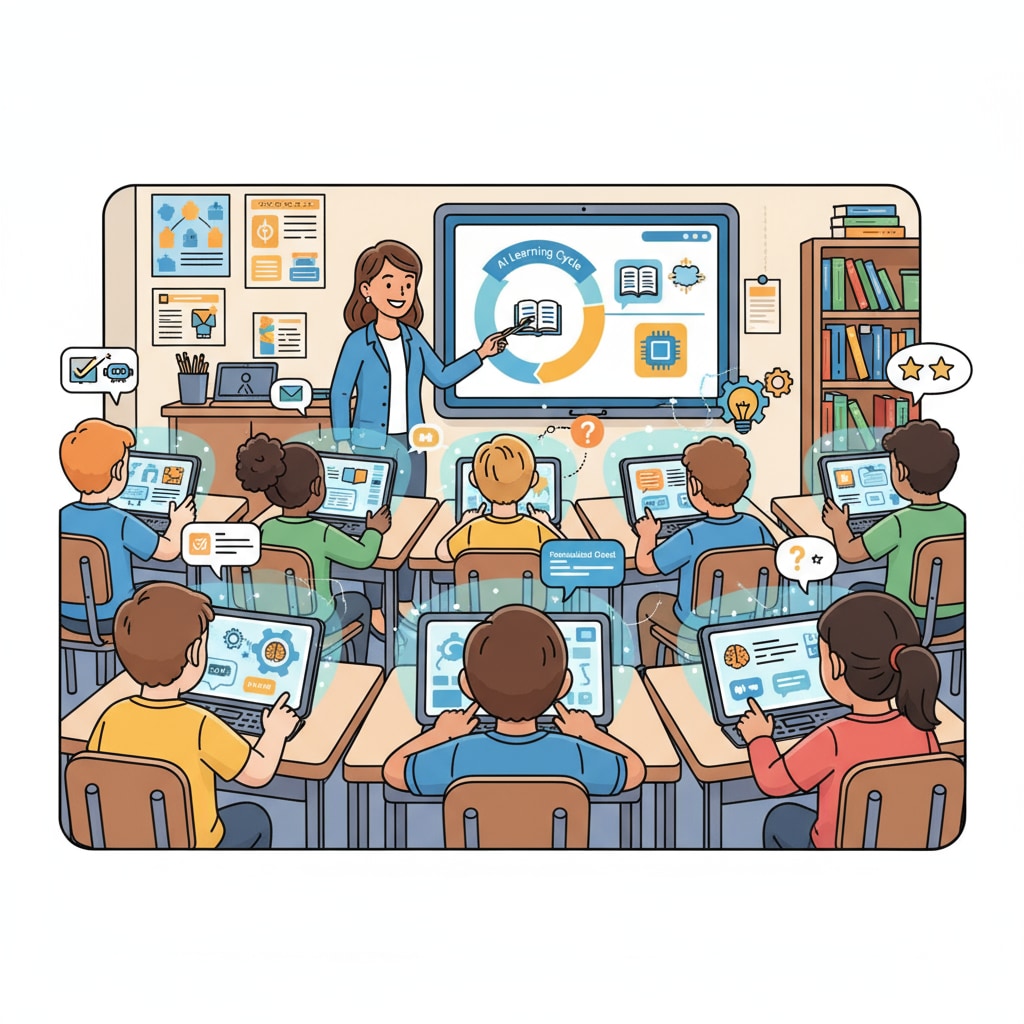Artificial intelligence, a powerful set of learning tools, is rapidly transforming the landscape of education, especially in the K12 sector. The integration of AI in educational environments has opened up new possibilities for teaching and learning. However, it also brings a set of challenges that need to be carefully navigated.

The Rise of AI in K12 Education
In recent years, the use of artificial intelligence in K12 education has witnessed a significant upsurge. AI – powered learning tools are designed to adapt to individual students’ learning paces and styles. For example, personalized learning platforms can analyze students’ performance data, identify areas of weakness, and provide tailored instruction. This customization helps students learn more effectively, as they receive content that suits their specific needs. According to ISTE’s position on AI in education, these tools have the potential to enhance student engagement and achievement.

Appropriate Applications of AI in K12
One of the most appropriate applications of AI in K12 education is in providing immediate feedback. AI – enabled assessment tools can quickly grade assignments and provide detailed feedback to students. This not only saves teachers’ time but also allows students to learn from their mistakes promptly. In addition, AI can be used to create immersive learning experiences. For instance, virtual reality (VR) and augmented reality (AR) applications, often powered by AI, can bring historical events or scientific concepts to life, making learning more engaging. As stated by Wikipedia’s entry on artificial intelligence in education, these immersive experiences can improve students’ understanding and retention of knowledge.
Another area where AI shines is in language learning. AI – driven language tutors can provide real – time language practice, correct pronunciation, and offer grammar tips. This is especially beneficial for students learning a foreign language, as they can get consistent practice outside of the classroom.
Readability guidance: The above paragraphs discuss the rise and appropriate applications of AI in K12 education. Short paragraphs are used to make the content more digestible. Transition words like ‘for example’, ‘in addition’ are used to connect ideas.
The Limitations of AI in K12 Education
Despite its numerous benefits, AI in K12 education has its limitations. One major concern is the potential for students to become overly dependent on technology. If students rely too much on AI – powered tools for problem – solving or learning, they may not develop critical thinking and independent learning skills. For example, if an AI tool always provides the answer, students may not learn to think through complex problems on their own.
Another limitation is the issue of data privacy. AI systems in education collect a vast amount of student data, and if not properly protected, this data could be misused. There is a risk of data breaches that could expose students’ personal information, which is a serious concern for parents and educators alike.
Moreover, the cost of implementing AI – based learning tools can be a barrier for many schools. High – quality AI systems often require significant investment in software, hardware, and teacher training. This can be a challenge, especially for schools with limited budgets.
Readability guidance: This section lists the limitations of AI in K12 education. Bullet points could be used in a more formal setting to further enhance readability. Transition words like ‘despite’ are used to contrast the benefits and limitations.
Finding the Balance
To ensure that AI is used appropriately in K12 education, a balance must be struck. Educators should incorporate AI as a supplementary tool rather than a replacement for traditional teaching methods. Teachers can use AI – generated data to inform their instruction, but they should also engage in face – to – face interactions with students to foster social and emotional development.
Students should be educated about the proper use of AI. They need to understand when to rely on AI tools and when to use their own critical thinking skills. For example, students can be taught to use AI as a resource for gathering information, but they should be required to analyze and synthesize that information on their own.
Regarding data privacy, schools and technology providers must implement strict security measures. This includes obtaining proper consent from parents and students, encrypting data, and having clear policies on data handling.
Readability guidance: This part presents strategies to find the balance in using AI in K12 education. Short sentences and transition words like ‘for example’ are used to convey the message clearly.
In conclusion, artificial intelligence, as a set of powerful learning tools, has great potential in K12 education. However, it is crucial to understand its appropriate applications and limitations. By finding the right balance, we can harness the benefits of AI to enhance the educational experience for students while avoiding the pitfalls.


